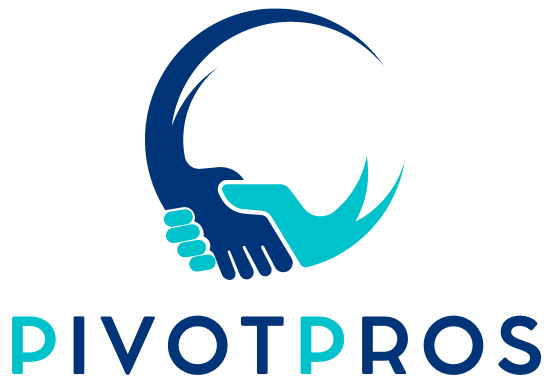With over a billion hours watched daily, YouTube reigns as the world’s largest video platform.
Creators upload over 500 hours of content every minute, with YouTube Shorts alone racking up 70 billion views daily.
Yet, YouTube isn’t always the ideal fit for every creator, especially as content needs and audience preferences vary widely.
Whether you’re looking for different monetization options, niche communities, or enhanced privacy controls, it helps to explore the growing range of YouTube alternatives.
In this guide, we’ll break down the best YouTube alternatives of 2024 for content creators, so you can find the platform that best suits your audience and goals.

What To Look for in the Best YouTube Alternative Apps and Websites
Before diving into specific platforms, it’s essential to identify the core features that make YouTube so valuable.
Here are key qualities that set YouTube apart and what you should consider when evaluating alternatives:
- Free and Unlimited Hosting: YouTube offers unlimited storage and bandwidth for free, allowing creators to upload as much content as they want.
- High-Quality Streaming: YouTube supports live streaming and resolutions up to 8K, ensuring videos look sharp and professional.
- Audience Reach: With billions of active users, YouTube’s audience size is unmatched, giving creators the potential for massive exposure.
- Comprehensive Monetization Options: YouTube offers multiple ways to earn, from ads and memberships to affiliate marketing and branded content.
- Social and Engagement Features: As both a video platform and social network, YouTube allows creators to build communities, engage through comments, and promote cross-channel interaction.
- Third-Party Integration: YouTube easily integrates with almost every marketing, streaming, and business app.
When considering YouTube alternatives, think about which of these features are most critical to your goals.
Whether you’re looking to prioritize monetization, community-building, or reach, finding the right balance will help you identify the platform that best supports your needs.
Here’s a refined and expanded version for each platform, including pros and cons and types of creators best suited for each alternative:
YouTube Alternatives Creators Can Use for Video Streaming And Monetization
Here’s an in-depth look at the best YouTube alternatives for content creators in 2024, with recommendations for who might benefit most from each platform.
1. Vimeo

Best suited for: Professional content creators, course instructors, consultants, and creatives looking for privacy and advanced customization options.
Vimeo is well-regarded among creators who want an ad-free, professional platform with strong privacy and embedding controls.
It’s particularly popular among those creating premium courses, exclusive content, or branded videos that will be embedded on external websites.
Vimeo’s paid plans unlock advanced analytics, membership options, and improved video quality, which can help enhance the content experience.
Pros:
- Excellent privacy and embedding options
- Ad-free, professional viewing experience
- Access to advanced analytics and audience insights
Cons:
- Limited free plan with 15GB storage
- Smaller audience reach than YouTube
- Higher cost for extensive storage and live streaming
2. Dailymotion

Best suited for: Educators, digital product sellers, and marketers looking for a free, searchable video hosting platform as a YouTube backup.
Dailymotion is a solid choice for creators looking for a platform similar to YouTube but with more emphasis on video management and search functionality.
It offers reasonable storage options on free accounts and has a broad range of content categories, making it easier for viewers to discover relevant videos. However, it doesn’t offer live streaming on free accounts.
Pros:
- Generous free storage and video length
- Solid search functionality for content discovery
- Great backup platform for additional audience reach
Cons:
- Lacks live streaming on free accounts
- Limited audience size compared to YouTube
- Fewer community-building features
3. Twitch

Best suited for: Gamers, musicians, artists, and anyone creating interactive live-stream content looking to build a highly engaged community.
Twitch, primarily known for gaming, has evolved to include categories like music, art, and “Just Chatting” streams.
With features tailored to real-time interaction, Twitch is excellent for creators who thrive on live engagement.
Its monetization options, including subscriptions and donations, make it particularly valuable for creators who consistently live stream.
Pros:
- Strong community and real-time audience interaction
- Unlimited live streaming with built-in monetization options
- Active categories beyond gaming, like music and arts
Cons:
- Limited discoverability for recorded content
- Requires frequent streaming to retain audience
- Less suited for on-demand content libraries
4. Patreon

Best suited for: Coaches, consultants, educators, and artists looking to build a subscription-based, exclusive community for dedicated fans.
Patreon is a community-based platform allowing creators to provide exclusive content to their paying subscribers. It’s ideal for creators aiming to nurture a dedicated following willing to support their content directly. While it doesn’t have YouTube’s searchability, its membership model makes it a reliable choice for those wanting to offer premium content behind a paywall.
Pros:
- Strong community-building through exclusive access
- Reliable subscription-based monetization
- Private, customizable content offerings
Cons:
- No public discovery engine
- Limited free plan with fewer features than YouTube
- Content restricted to subscribers only
5. Facebook

Best suited for: Course creators, consultants, and lifestyle influencers focused on building engaged communities and leveraging Facebook’s vast user base.
Facebook’s massive audience reach, HD video uploads, and robust engagement features make it an ideal platform for creators looking to build a community around their content.
Facebook Watch enhances discoverability, while monetization options like in-stream ads and product sales tools provide revenue streams.
The platform is particularly useful for creators who actively engage with their audience through comments and shares.
Pros
- Large audience with high engagement potential
- Facebook Watch enhances discoverability
- In-built monetization options for ads and partnerships
Cons
- Less organized content management than YouTube
- Limited search filters for video content
- Content visibility depends heavily on algorithm
6. LinkedIn

Best suited for: Business professionals, coaches, and educators aiming to connect with B2B audiences or build authority in professional fields.
LinkedIn is a powerful platform for creators targeting professionals and business audiences.
Its algorithm favors video content, boosting visibility for creators who share valuable industry insights, tutorials, and career-focused content.
While LinkedIn lacks some of YouTube’s organization features, it’s highly effective for building brand authority and professional connections.
Pros
- High visibility for video content
- Great platform for networking and authority-building
- Perfect for B2B content targeting professionals
Cons
- No built-in monetization features
- Limited video storage and organization options
- Shorter video length limit (15 minutes per video)
7. Instagram

Best suited for: Influencers, lifestyle brands, and creators focused on visual storytelling and engaging behind-the-scenes content.
Instagram is a great platform for visual-driven creators who want to reach audiences with short, engaging videos.
With Stories, Reels, and IGTV, Instagram offers several video formats that can cater to different audience segments.
While it lacks the advanced playlist features of YouTube, Instagram’s algorithm ensures content is recommended to relevant users, increasing discoverability.
Pros
- Multiple video formats to engage audiences
- High discoverability with algorithm-based recommendations
- Strong monetization options (ads, partnerships, subscriptions)
Cons
- Limited video organization tools
- Videos are capped at 60 minutes on IGTV
- Requires consistent engagement to retain visibility
8. TikTok
Best suited for: Creators targeting younger audiences, influencers, and educators looking for quick engagement and viral reach.
Did you know that TikTok users in the United States spend 32% of their social media time on the platform?
TikTok’s short-form video format and powerful recommendation algorithm make it a prime choice for creators aiming for rapid visibility and high engagement.
TikTok now supports videos up to 10 minutes and live streaming, making it a flexible tool for tutorials, mini-classes, and product demos.
Its monetization features, including ads and sponsorships, provide revenue options for viral content.
Pros
- High potential for viral content discovery
- Effective monetization options for popular creators
- Strong reach among younger audiences
Cons
- Limited audience for B2B and educational content
- Viral reach requires consistent, trendy content
- Lacks playlist and extensive video organization tools
9. X (formerly Twitter)
Best suited for: Public speakers, educators, and commentators who create quick, impactful video content with direct audience engagement.
X, previously Twitter, enables creators to share short video clips and interact with audiences in real time.
It’s best suited for those wanting to deliver timely, topical videos or share snippets from podcasts, tutorials, or commentary videos.
X’s discovery algorithm ensures high engagement, and premium users can upload longer videos with added monetization features.
Pros
- Direct engagement with audience and high visibility
- Strong discovery engine for relevant content
- Monetization options through advertising and brand deals
Cons
- Limited to short videos on free plans
- No playlist or video organization features
- Limited storage for non-premium users
Which Video Streaming Platform Is the Best Alternative to YouTube?
Each platform has unique strengths that make it an excellent fit for different types of content creators.
But, in our opinion, here are the best YouTube alternative platforms based on your specific content goals and audience needs.
- Best for Community Engagement: Facebook. Its massive user base, interactive engagement tools, and in-built monetization options make it ideal for creators who want to build a strong community presence.
- Best for Professional and B2B Content: LinkedIn. If your content targets professionals or business audiences, LinkedIn’s audience and video algorithm provide excellent exposure and networking potential.
- Best for Short-Form and Viral Content: TikTok. Its algorithm is designed for quick, viral engagement, making it ideal for creators focusing on short, trendy videos, especially if targeting younger audiences.
- Best for Exclusive Content and Memberships: Patreon. With its strong subscription model, Patreon works well for creators who want to offer exclusive, premium content to a dedicated audience.
- Best for Live, Interactive Streaming: Twitch. Twitch’s focus on live engagement, especially for gaming, music, and art, makes it the go-to for creators looking to interact with their audience in real time.
- Best for Hosting Embedded Content: WordPress and Blogger. Ideal for educators, course creators, and bloggers, these platforms offer secure, controlled hosting for video content embedded directly on websites or within courses.
Ultimately, the best platform depends on your audience and content goals. Some creators might benefit from using a combination of platforms to maximize reach and engagement.
For instance, educators might use YouTube and Vimeo for public reach, while reserving Patreon for paid courses and behind-the-scenes content.
So, explore these platforms to find the perfect YouTube replacement.
